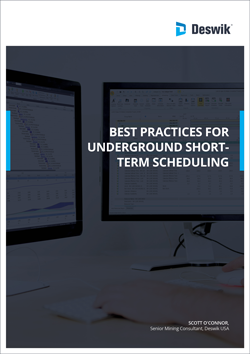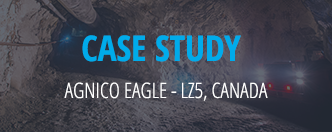Best practices for underground short-term scheduling
 Short-term scheduling of an underground mine is a fast-paced, repetitive process. Planners are repeatedly under pressure to deliver schedules that meet immediate operational constraints while adhering to business objectives. It is difficult to find the appropriate level of detail to model. Schedules are often either too detailed, difficult to understand and maintain, or they are overly simplistic, resulting in a mismatch with operational reality.
Short-term scheduling of an underground mine is a fast-paced, repetitive process. Planners are repeatedly under pressure to deliver schedules that meet immediate operational constraints while adhering to business objectives. It is difficult to find the appropriate level of detail to model. Schedules are often either too detailed, difficult to understand and maintain, or they are overly simplistic, resulting in a mismatch with operational reality.
Typically, short-term planners rely heavily on manual processes, rendering them reactive with a constant focus on “putting out fires” (Åstrand 2018). Implementations of mine planning software often lead with long-range planning solutions, leaving the short-range implementations as afterthoughts. The short-term schedule inherits all the bloat from the long-range model or, worse yet, remains a decoupled spreadsheet exercise. When long-range priorities are not adhered to in the short term, any possibility of obtaining the global optimum result is precluded (Nehring et al 2010). Even in instances where common mine planning software is employed for both short- and long-term scheduling, friction can occur when integrating planning horizons. This often takes the form of large file sizes, rework as plans are passed between planning horizons, and duplication of effort.
This paper provides some recommendations on best practices to streamline and automate this process.
Download the “Best practices for underground short-term scheduling” paper



